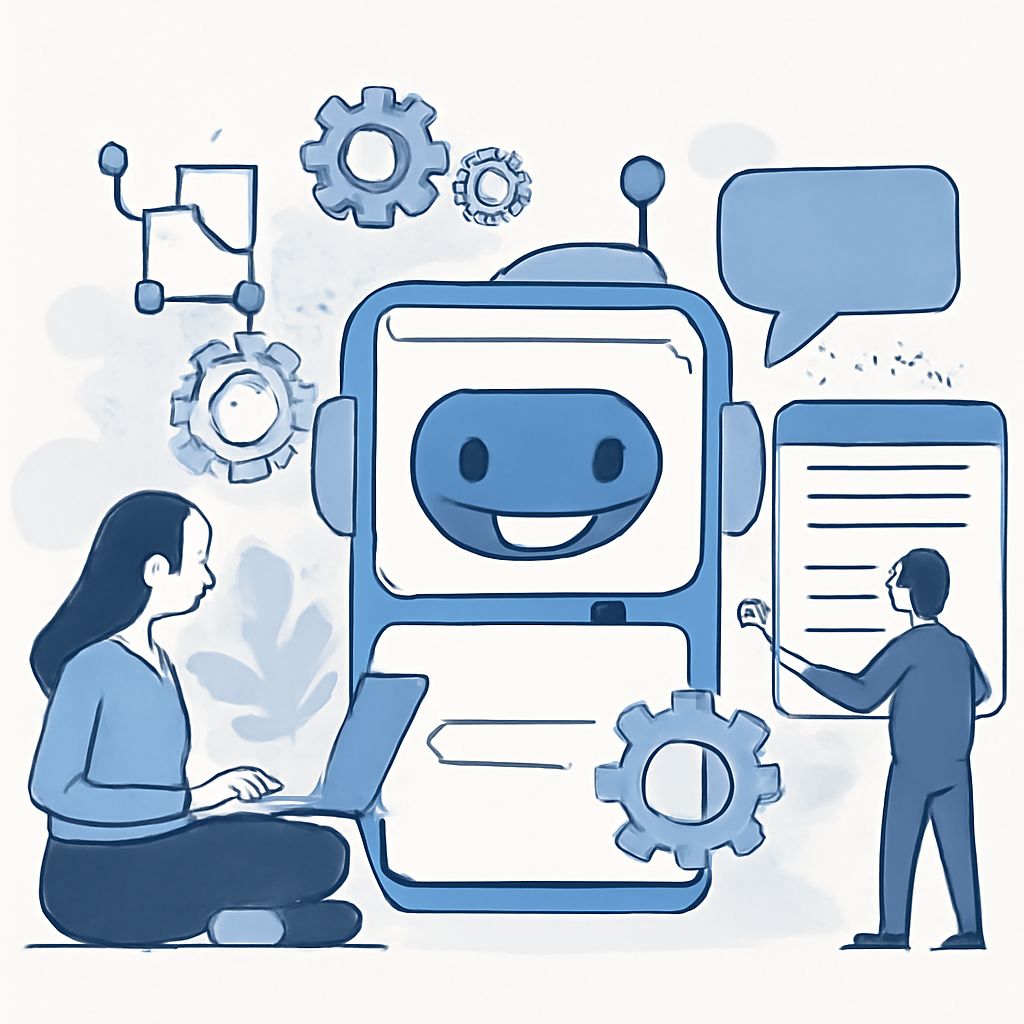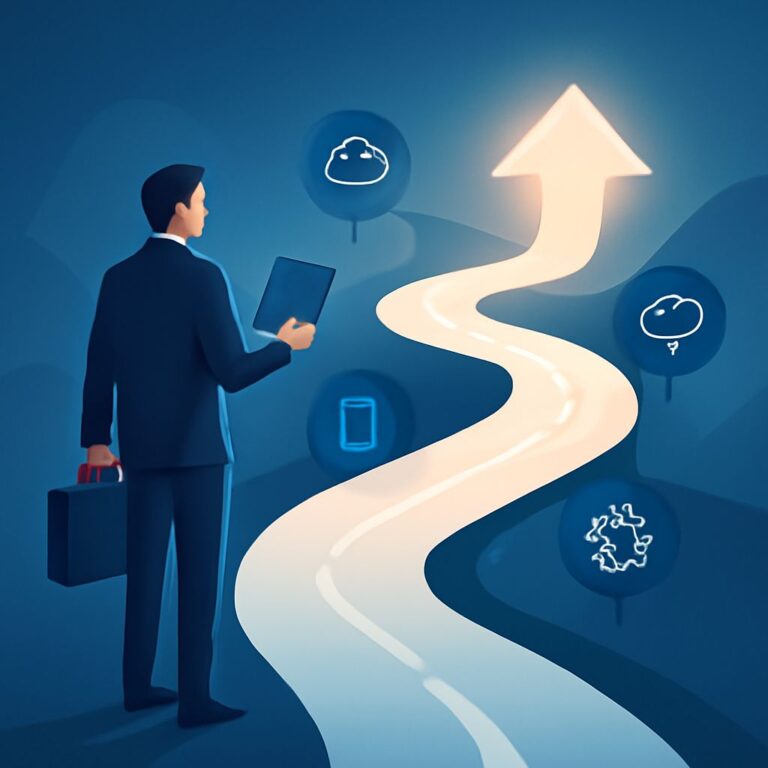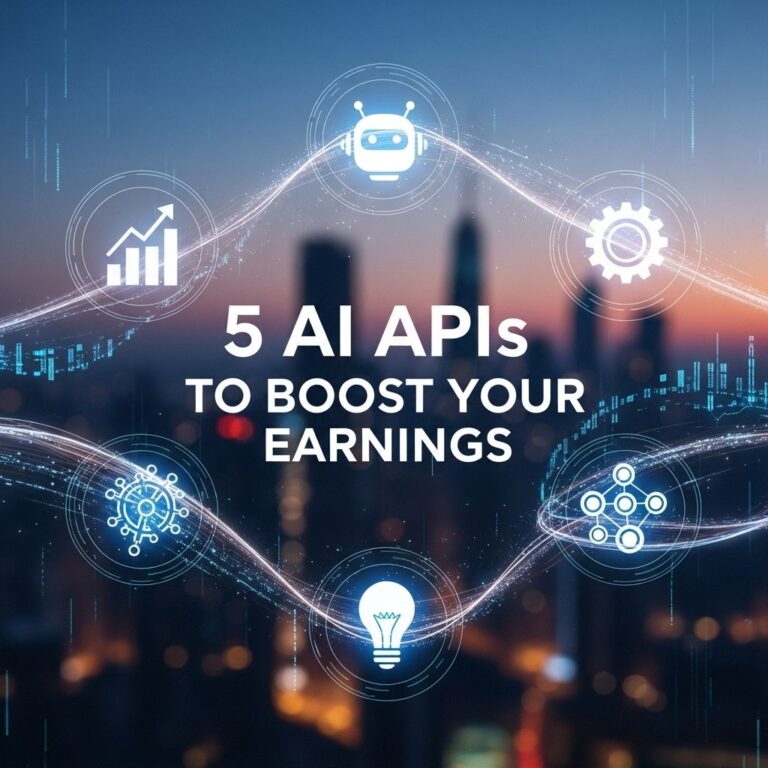Table of Contents
The Ultimate Guide to Chatbot Automation in 2023
As we continue to dive deeper into the digital age, the integration of artificial intelligence into everyday business operations is not only inevitable but also increasingly essential. One of the most significant advancements in this field is the evolution of chatbot automation. With technology advancing rapidly, 2023 has proven to be a landmark year for businesses looking to harness the power of chatbots to streamline operations, enhance customer service, and drive sales.
Understanding Chatbot Automation
Chatbot automation refers to the use of artificial intelligence to automate interactions that would typically require human intervention. These automated systems can perform a variety of functions, from answering simple queries to managing complex customer service issues. The sophistication of chatbots has grown exponentially, with modern systems capable of understanding and processing natural language, mimicking human conversation, and learning from previous interactions to improve over time.
Key Benefits of Chatbot Automation
- 24/7 Availability: Unlike human agents, chatbots can operate around the clock, providing customers with immediate responses to their inquiries at any time of day.
- Scalability: Chatbots can handle a large volume of interactions simultaneously, making it easier for businesses to scale their operations without a corresponding increase in staffing costs.
- Cost-Effectiveness: By automating routine tasks, businesses can reduce operational costs associated with hiring and training customer service staff.
- Consistent Response: Automated systems ensure customers receive accurate, uniform responses every time, minimizing the risks associated with human error.
- Data Collection and Insights: Chatbots can collect valuable data from customer interactions, providing businesses with insights into customer behavior and preferences.
Types of Chatbots
In 2023, chatbots have diversified into several types, each serving specific business needs:
- Rule-Based Chatbots: These are the simplest form of chatbots, operating based on a set of predefined rules and patterns. They are ideal for answering straightforward queries and performing basic tasks.
- AI-Powered Chatbots: Utilizing machine learning, these bots can understand complex queries, engage in natural language processing, and continuously improve from past interactions.
- Hybrid Chatbots: Combining rule-based logic with AI capabilities, hybrid chatbots offer a flexible solution that can handle a wide range of tasks and interactions.
- Voice-Activated Chatbots: These are designed to interact with users through voice commands, integrating seamlessly with smart devices to provide hands-free assistance.
Implementing Chatbot Automation
Implementing chatbot automation in 2023 involves several key steps. Businesses must first identify the specific tasks they wish to automate and determine which type of chatbot is most suitable for their needs. Selecting the right platform is crucial, as it should offer the necessary integrations and features to support business operations. Additionally, companies must ensure their chatbots are trained with relevant data to accurately understand and respond to customer queries.
Challenges and Considerations
Despite their advantages, chatbots are not without challenges. Key considerations include:
- Integration: Ensuring that chatbots integrate seamlessly with existing systems can be complex and requires careful planning.
- Privacy and Security: As chatbots collect and process personal data, it’s vital to implement robust security measures to protect customer information.
- Customer Experience: While chatbots enhance efficiency, businesses must balance automation with maintaining a personal touch to ensure customer satisfaction.
- Continuous Learning: Chatbots require continuous updates and training to keep up with changes in customer behavior and language use.
The Future of Chatbot Automation
The future of chatbot automation looks promising with advancements in AI and machine learning. We can expect chatbots to become more intuitive, capable of handling increasingly complex tasks, and offering even more personalized experiences. Beyond customer service, chatbots are likely to play a larger role in areas like marketing, sales, and even healthcare, acting as virtual assistants that streamline operations and enhance user engagement.
Conclusion
Chatbot automation in 2023 is revolutionizing the way businesses interact with their customers, offering significant advantages in terms of efficiency, cost savings, and customer satisfaction. As technology continues to evolve, companies that embrace chatbot solutions will likely lead the way in customer engagement, setting new standards for service and innovation in the digital age.
FAQ
What is chatbot automation?
Chatbot automation refers to the use of AI-powered chatbots to handle customer interactions and tasks automatically, reducing the need for human intervention.
How can chatbot automation benefit my business?
Chatbot automation can improve customer service efficiency, reduce operational costs, provide 24/7 support, and enhance customer engagement by providing quick and consistent responses.
What are the key features to look for in a chatbot automation tool?
Key features include natural language processing, integration capabilities, analytics and reporting, scalability, and multilingual support.
Can chatbot automation be customized for specific industries?
Yes, chatbot automation can be tailored to meet the specific needs of different industries, such as e-commerce, healthcare, finance, and hospitality, providing personalized support and solutions.
Is it difficult to implement chatbot automation?
Implementing chatbot automation is becoming increasingly easier with user-friendly platforms and tools available. However, the complexity can vary based on the business requirements and desired functionalities.
How does chatbot automation impact customer satisfaction?
Chatbot automation can significantly enhance customer satisfaction by providing prompt responses, reducing wait times, and offering personalized interactions, thus improving the overall customer experience.









